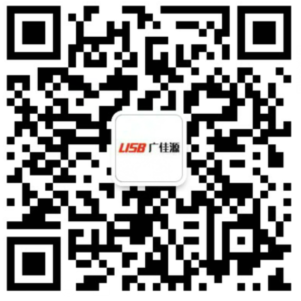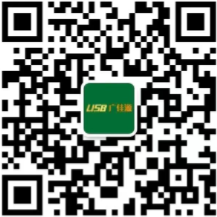 Mr. Chen:136-6225-2835
Mr. Chen:136-6225-2835
 Miss Chen:189-2385-0895
Miss Chen:189-2385-0895
Shenzhen Guangjiayuan Electronic Technology Co., Ltd
Mr. Chen: 136-6225-2835 (same WeChat account)
QQ: 979285705
Miss Chen: 189-2385-0895 (same WeChat account)
QQ: 2391552662
Chen Weiting :135-3824-4786 (same WeChat account)
Chen Weihao: 139-2459-4393 (same WeChat account)
Tel: 86-0755-33182327
Email: gjydz88@163.com
Website: www.usb-type.com
Address: Building 10, Hongxing Gebu Qixiang, Songgang Town, Bao'an District, Shenzhen, Guangdong Province
Recently, the proposal made by Ding Lei, a member of the National Committee of the Chinese People's Political Consultative Conference and CEO of NetEase, to standardize the ports of smart electronic device chargers has sparked heated discussions and even appeared on Weibo hot searches.
Regarding Ding Lei's proposal, the Ministry of Industry and Information Technology stated in the response letter that at that time, the smart terminal shopping mall had formed a pattern dominated by USB C interfaces, with multiple interfaces and charging skills coexisting. "Our department will continue to promote the formulation of relevant national standards, promote the integration and consistency of charging interfaces and skills, and improve the recycling rate of electrical and electronic products.
It is reported that the USB C interface, also known as the type-C interface or C port, supports forward and reverse insertion and fast charging, and is now widely used on Android phones.
A reporter from China Business Daily interviewed relevant professionals and professionals, and many believed that type-C interfaces would become the mainstream and trend of shopping malls. The type-c interface is an inevitable trend in future shopping malls, which will screen out Micro USB and USB interfaces. "Liu Huan, sales manager of type-c manufacturer Shenzhen Xianying Technology Co., Ltd., told reporters that on current 3C (computer, communication, and consumer electronics) devices, the type-c interface is already a mainstream charging interface and is expanding to non 3C devices.
In Liu Huan's view, the trend of type-c consistency in the world was seen a few years ago. The country has formulated relevant regulations and consistent charging interfaces, which have significant benefits for the profession.
The rise of type-c interface "Nowadays, USB interfaces are mainly divided into three types: the first type is the Micro USB interface, which was once used by many Android phones as a charging port; the second type is the type-a interface, which is commonly used on USB drives, keyboards, and mice; and the third type is the type-c interface, which is smaller and thinner, and also supports forward and backward insertion." Liu Huan pointed out that different physical shapes of USB interfaces also support different protocols, The type-c interface is the only interface that supports the latest USB specification USB4, with a maximum data transmission bandwidth of 40Gbps.
If the interface belongs to the specification of physical hardware, then the protocol is a dual specification of hardware and software. The USB protocol that all USB interfaces must comply with was drafted by the standardization organization USB Implementers Forum (hereinafter referred to as "USB-IF") established in 1994, with Intel and Microsoft as the initiators of USB-IF.
In short, the primary task of USB-IF is to promote universal serial bus skills and provide corresponding skill specifications to promote the development of high-quality USB peripherals (devices) and ensure that compliant products pass compatibility testing smoothly. The establishment of USB-IF has played an important role in promoting the development of USB interfaces.
With the development of USB skills, the functions of USB interfaces are becoming stronger and stronger. With just one USB cable, charging, data transmission, screen projection, and other functions can be completed. The era when mobile phones needed two cables to charge and copy data is gone forever. As of now, the USB interface appearance is mainly divided into three categories: Type-A, Type-B, and Type-C, and the aforementioned Micro USB is only a small category of Type-B.
As the latest version of USB protocol, USB4 protocol is not only Backward compatibility with USB 3.0/2.0, but also compatible with Thunderbolt 3/4 protocol; The Thunderbolt Protocol was developed by Intel and Apple with excellent functionality. The Thunderbolt 1 and Thunderbolt 2 protocols used the Mini DP interface, and it was not until Thunderbolt 3 that it was upgraded to an interface with a similar design to Type-C. Due to the high cost of Thunderbolt 3 interface requiring independent chips and Intel certification, implementation encountered difficulties. Therefore, Intel opened up the Thunderbolt Skill Specification to USB-IF, which gave rise to the free USB4 protocol.
The type-c interface is the only external interface of the USB4 protocol, making it the most powerful USB interface with current functionality. Liu Huan pointed out that strong functionality, low power consumption, and blind insertion are the three major advantages of the Type-C interface, and Apple was the earliest user and promoter of the Type-C interface. After its first installation of the Type-C interface on MacBook in 2015, manufacturers such as Dell and HP quickly followed suit,
At the same time, the type-C interface has also begun to be applied to smartphones, and phone manufacturers such as Samsung and Huawei have launched products that use the type-C interface. Of course, the popularity of the type-c interface on smartphones cannot be separated from the fast charging Power Delivery (PD) skills discussed by mobile phone manufacturers. Liu Huan introduced that the maximum PD fast charging protocol for the type-c interface can now reach 240W.
If it's a 3C device, then the type-C interface has now become the charging interface for the mainstream. "Liu Huan stated that the new devices have all chosen the C port, and on non 3C devices, the type-C interface will gradually replace other interfaces in the future.
A staff member from Shenzhen Guangjiayuan Electronics, another type c manufacturer, also told reporters that their company started doing type c affairs in 2013, and this business grew rapidly in 2018. She now handles over 60% of the affairs related to type c.
The chip dispute behind port C
In fact, type-c can also be divided into many types, including pure charging, video transmission support, and those with gallium nitride charging interfaces. "Liu Huan takes the type-c interface connector that is only used for charging as an example. Due to her skilled skills, her cost has now decreased." You can do it for a few yuan cheaper, and you can do it for 20 to 30 yuan more expensive.
Liu Huan also pointed out that the cost of type-C interface related products is primarily related to the materials used, technology, and whether chips are included. These objectively lead to not all type-C interfaces being as strong as theory. For example, the majority of the original data cables of common type-C phones are castrated versions, and the actual charging power and data transmission rate are not as high.
In terms of chips, Liu Huan takes their company's type-c interface product with a maximum charging power of 100W and a maximum data transmission bandwidth of 10Gbps as an example, and chooses Weifeng VL152 chip. According to the disclosed information, the Weifeng VL152 chip is specifically designed for type-c To type-c wires and supports forward and backward insertion. It has now passed USB-IF and PD certification.
Chips are the weakness of our skills, and the vast majority now rely on imports, mainly from the United States, Malaysia, and Taiwan, "Liu Huan said.
According to the list released by the USB-IF Association, a total of 19 chips have obtained the association's USB PD3.0 (PPS) certification from December 2017 to May 2018. Through sorting and statistics, the vast majority of these 19 chips are from manufacturers in the United States and Taiwan, such as Wellrend Weiquan, VIA Weifeng, Richtek Richter, NXP NXP, Cypress Cypress, and other chip manufacturers.
It is worth noting that domestic manufacturers are bravely catching up on fast charging chips. In February 2021, the protocol chip SC2151A launched by the renowned power processing chip manufacturer Shanghai Nanxin Semiconductor officially obtained the USB-IF Association PD3.0 certification; The fast charging protocol chip SW2303 developed by Zhuhai Zhirong, the original manufacturer of the fast charging chip, has also obtained PD3.0 certification from the USB-IF association. Prior to this, the chip also passed Qualcomm QC4+fast charging certification.
By comparison, why has the iPhone retained the lighting interface since iPhone 5? The reason is that the lighting interface is equipped with an Apple MFi authentication chip, which allows Apple to charge the iPhone only when authorized by Apple. Through this authorization method, Apple can earn a certain amount of revenue. If we replace the iPhone's lighting interface with the type-c interface, wouldn't Apple be able to earn this certification fee?
As early as 2018, the European Union began to legislate on the uniform charging interface. Customers can also reduce Electronic waste without bringing a stack of data lines with different interfaces; At the beginning of 2020, the European Union launched another vote on a unified charging interface, which ultimately passed with a high vote.
Ding Lei stated that before the proposal, he and his team conducted extensive research and found that the issue of charger specifications was a pain point for many people. After the skills gradually take shape, it is necessary for professions or governments to formulate certain norms. These norms and adjustments will not bind the limbs of innovation, but lead professions towards a healthier and more orderly direction, "Ding Lei said.
But now there are doubts in shopping malls about consistent interfaces. One side is concerned that the government replacing shopping malls and consistent charging standards will undermine the innovation drive of enterprises. "What if our country's enterprises can develop better protocols and interfaces in the future? On the other hand, the other side believes that the charging interface is entirely chosen by the shopping mall, ignoring the important role of standardization in high-quality development of skills to a certain stage.
Previously, the Ministry of Industry and Information Technology guided relevant professional associations and enterprises to draft and release China's first fast charging group standards. Taking this as a guide, it will better leverage the advantages of the binary standard system, achieve government action and effective shopping malls.
In the eyes of Major General Ding, an industry and economics observer and pioneer of Dingtech, the charging interface is not a new issue, but there are still many commercial interests behind it. Not only domestic enterprises, but also foreign-funded enterprises. If we directly use administrative means to achieve consistency, there will be great resistance and it will be difficult to balance the interests of all parties, "said Major General Ding.
If the country formulates relevant regulations for charging interfaces, what will be the impact on the profession? Liu Huan bluntly said, "The situation in type-C shopping malls in China is quite chaotic, and for professions, the benefits of formulating regulations by the country are significant." She also stated that the country should not introduce new regulations at the skill level, but rather in terms of product safety.
Major General Ding also expressed similar views. The skill level of a consistent charging interface is not difficult, but it is difficult to achieve harmonious interests. Issues such as standardized patents need to be addressed, and it is necessary to establish open channels for sharing and even public welfare skills, which will hinder the differentiation and innovation of enterprises. However, the advantages of the industry as a whole outweigh the disadvantages, "said Ding Shaojiang.
Source: China Business Network
Contact person:
Mr. Chen 136-6225-2835 (same WeChat account)
Miss Chen 189-2385-0895 (same WeChat account)
Chen Weiting 135-3824-4786 (same WeChat account)
Chen Weihao 139-2459-4393 (same WeChat account)
Address:
Building 10, Hongxing Gebu Qixiang, Songgang Town, Bao'an District, Shenzhen, Guangdong Province
 |
 |
| Technology 1 | Technology 2 |